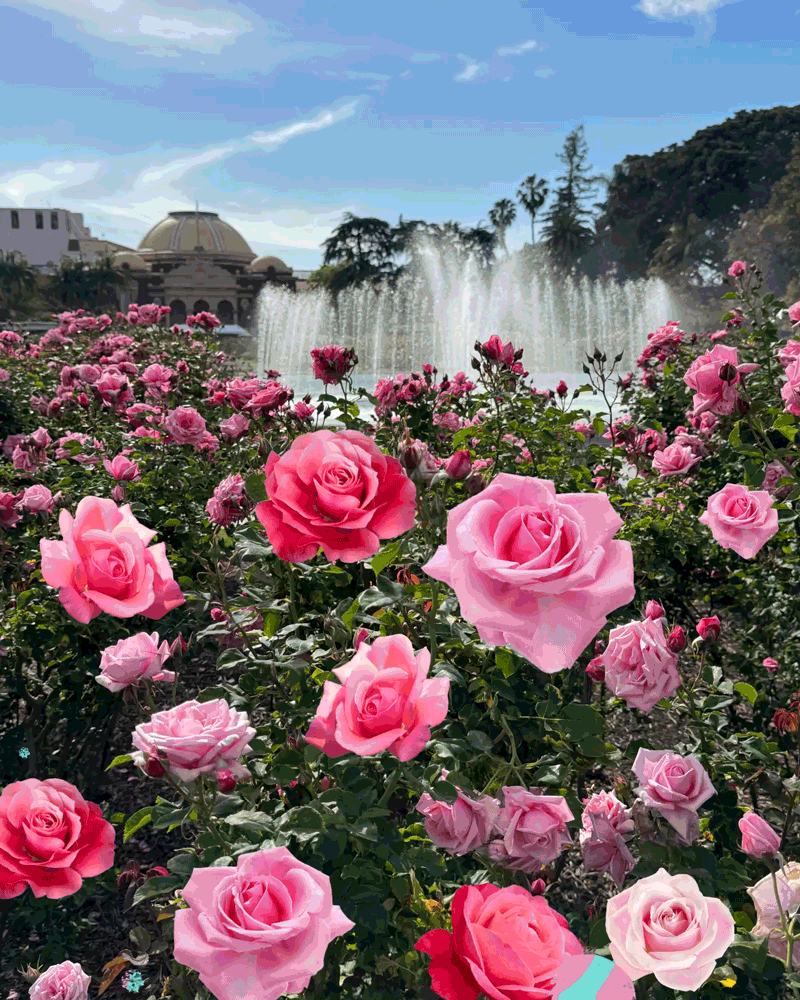Cape Town bursts with blooms during its spring wildflower show
- Share via
Reporting from CAPE TOWN, South Africa — When I visited Cape Town in September, the tree buds were exploding, and golden-green blades were popping up in the pavement cracks.
The seasons are reversed in the Southern Hemisphere, so as Angelenos are lamenting the onset of fire weather, those south of the equator are enjoying a return to spring, or what Henry David Thoreau once described as “an experience in immortality.”
That’s not quite what I felt as I stepped off the plane. Through three days of rain I could at least glimpse expanses of non-irrigated green, but I spent the better part of the week obsessively checking the Weather Underground app in hopes the skies would clear. That happened on my last full day here.
My plans for wildflower viewing in the Western Cape province, home to Cape Town, had been washed out. But thanks to Cecil John Rhodes, who purchased from farmers and loggers a large tract of land on the lower slopes of Table Mountain — the city’s most notable geographic feature — I had the next best thing: Kirstenbosch National Botanical Garden, a 20-minute taxi ride from downtown.
If spring has become increasingly elusive in the Golden State, know this: In other locations on the planet, nature, for the time being, is cooperating, and as Bob Gibbons, author of “Wildflower Wonders: The 50 Best Wildflower Sites in the World,” told me, the flowers on the Western Cape are nothing short of breathtaking.
“It’s one of the few places in the world where you can see both an incredible range of species and some extraordinary spectacles where everything flowers at once,” Gibbons said.
As for Rhodes, though he was mainly a businessman and mining magnate, he had the foresight to rescue the area from development. When he died in 1902, his estate was bequeathed to the government. Henry Harold Welch Pearson, a botany professor, led the campaign to transform the property into a botanical garden through a parliamentary resolution in 1913.
From Kirstenbosch’s rustic beginnings, when droves of pigs roamed the area, the garden was painstakingly developed. Today, Kirstenbosch features a research center, arboretum, amphitheater and desert conservatory.
Blossom seekers may prefer the wildness of pure nature, but for those short on time or luck, the gardens do not disappoint. Consider the dramatic beauty of strolling the contour path that traverses the lower eastern slopes of the granite mountain overlooking the garden. Hypnotized by the sounds of free-flowing water and the imagery of delicate leaves backlighted by the sun, I was tempted to continue up Skeleton Gorge, whose steps (and occasional ladders) lead to the mountain’s 3,200-foot summit. But I was here for the flowers.
Kirstenbosch is first and foremost a botanical garden, with more than 7,000 species cultivated, including some 450 types of trees. There’s the practical, such as the Water-wise Garden, offering tips on growing plants in drought situations, and the Garden of Extinction, containing some of the nearly 1,500 South African plants that may one day disappear.
There’s also the Useful Plants garden, demonstrating species used for everything from rope to traditional medicine, and the Braille Trail created so that visually impaired visitors can experience the woods by using their senses of smell and touch.
Add to that one of my favorites: the Fragrance Garden with its “sweetly fragrant Ifafa Lilies” and where signage encourages you to “feel the soft velvety texture of Kidney-leaf Pelargonium.”
California gardeners will recognize many of the specimens, particularly the proteas, the stunning yellow and orange pincushions that were in full bloom. Proteaceae blossom in this garden from winter to early summer.
These wonders can be grown fairly easily in Southern California, but they thrive in South Africa. Anyone who has tried to cultivate a protea will be struck by Kirstenbosch’s collection of soaring bushes overloaded with flamboyant flowers reaching for the sky.
No wonder, according to Alice Notten, the garden’s interpretation officer, that Kirstenbosch is the only botanical garden to fall within a designated natural UNESCO World Heritage Site. (UNESCO bestowed this honor in 2004.) Equally significant, “Kirstenbosch was the first botanic garden in the world to focus on the indigenous flora of a single country,” Notten said.
The nearly 90-acre plot sits in the heart of the Cape Floristic Region, which may be the smallest of the world’s six floristic regions but is nevertheless the richest, botanically speaking.
This 170-square-mile area is home to South Africa’s version of our chaparral, the shrubby, dwarf fynbos, which boasts some 9,000 species of flowering plants.
“Kirstenbosch Botanical Garden is rather like a crash course in fynbos,” Notten said, “with hundreds of different kinds of these plants from all over the Western Cape all growing in one beautiful place, ideal for people that can’t get to the wild, or for beginners still finding out who’s who and what’s what in the fynbos.”
If you go
Kirstenbosch National Botanical Garden, Rhodes Drive, Newlands, Cape Town, South Africa; 011-27-21-799-8783. sanbi.org/gardens/kirstenbosch. Open daily; admission about $4.50 for adults.
More to Read
Sign up for The Wild
We’ll help you find the best places to hike, bike and run, as well as the perfect silent spots for meditation and yoga.
You may occasionally receive promotional content from the Los Angeles Times.






